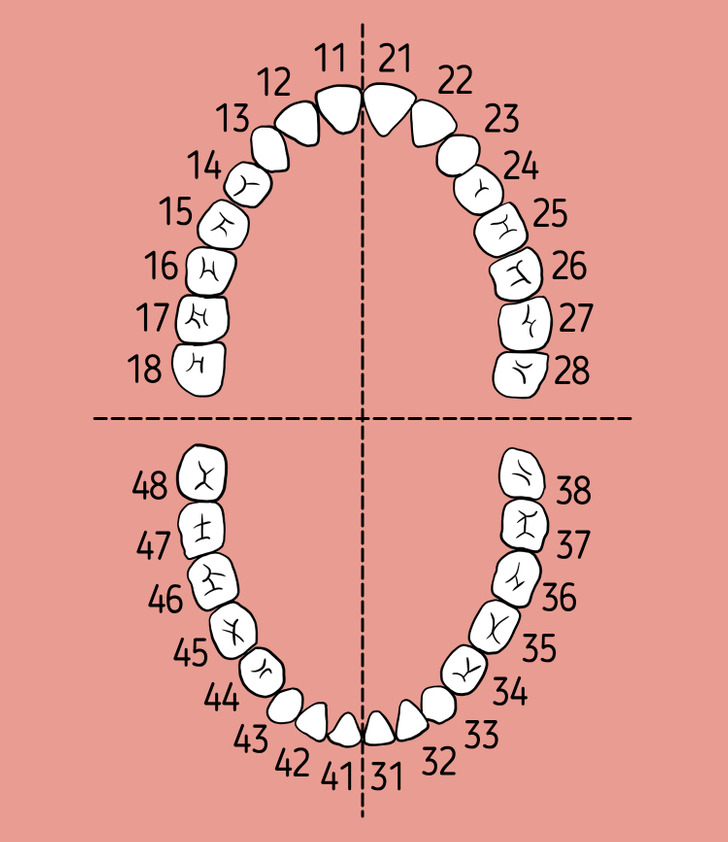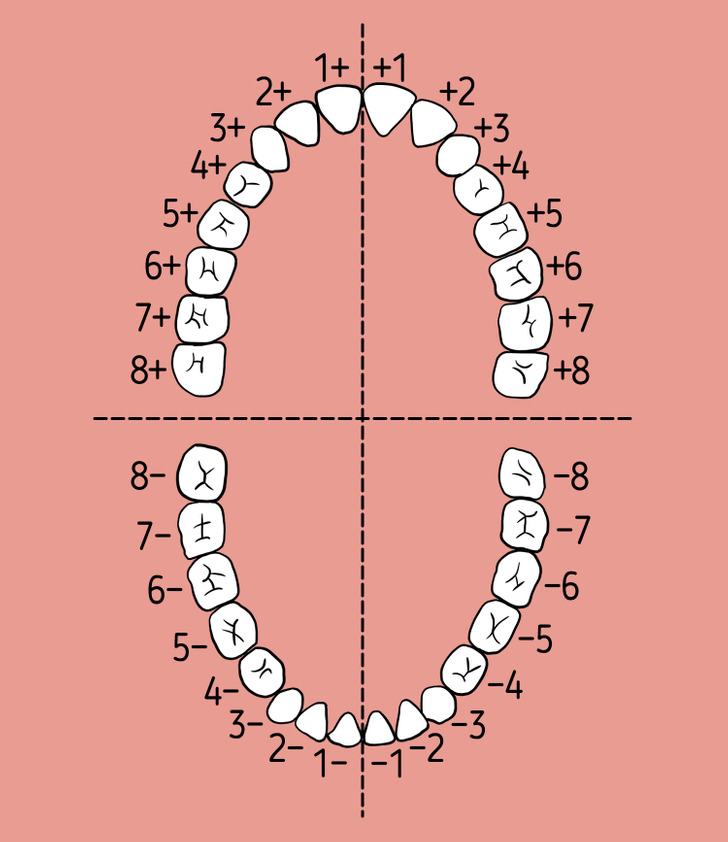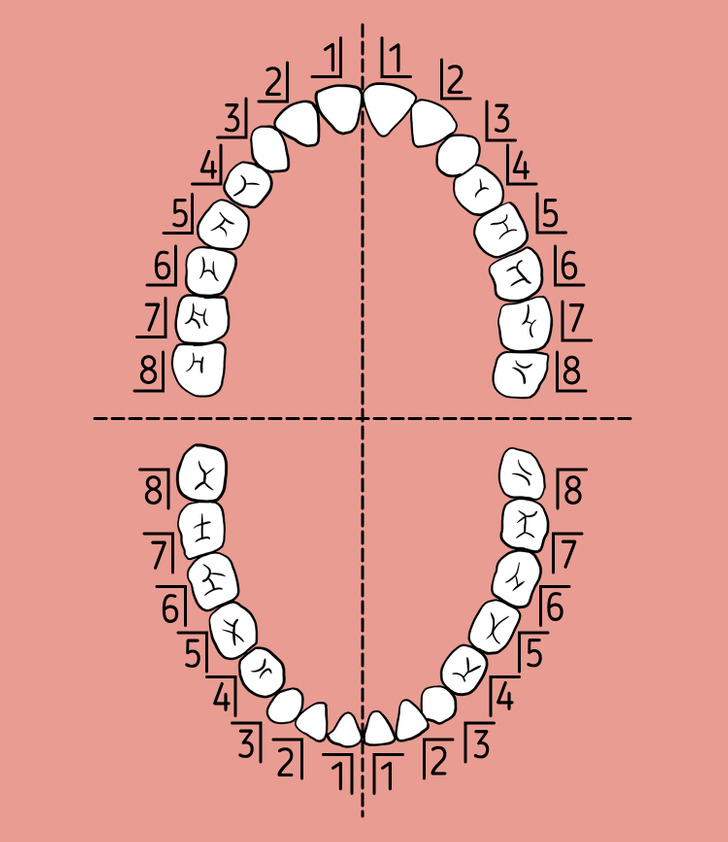How Dentists Count Teeth and Why There Might Be 48 of Them
If you’ve ever visited a dentist, you’ve probably heard a lot of strange numbers. And it’s because there are different systems of tooth notation in dentistry.
5-Minute Crafts is going to tell you about the popular tooth notations, so you can always understand your dentist.
There are several tooth notations, each of them is unique and has advantages in certain areas of dentistry.
FDI

FDI is one of the main notation systems. It was created in 1971 and is widely used today.
In FDI, every tooth has its own number consisting of 2 numbers: the first is the segment of the jaw, and the second is the location of the tooth in the row.
4 segments of the jaw:
- Upper right — 1
- Upper left — 2
- Lower left — 3
- Lower right — 4
A healthy person has 8 teeth in each segment. The enumeration starts from the front teeth in each segment.
Haderup’s system

In Haderup’s system, the jaw is also divided into 4 segments and the numeration goes from the center to the edges. The numbers are also from 1 to 8.
The thing about this system is using + for the upper jaw and — for the lower. A plus (+) indicates an upper position while a minus (−) indicates a lower. For instance, −6 indicates the 6th lower left tooth, i.e the first mandibular molar.
Zsigmondy-Palmer notation method

The Zsigmondy-Palmer notation method was created in 1861 by Viennese dentist Richard Adolf Zsigmondy. The American doctor Corydon Palmer also followed this system.
The idea of this system is that every tooth is noted with a symbol (┘└ ┐┌). The vertical line splits the jaw into two even parts through the front teeth, and the horizontal line splits the upper and the lower rows.
- The corner under the number on the left is the left upper part of the jaw.
- The corner under the number on the right is the right upper part of the jaw.
- The corner above the number on the left is the left lower part of the jaw.
- The corner above the number on the right is the right lower part of the jaw.
This system is very good because it graphically indicates the necessary tooth. This is why it’s often used in oral surgery.